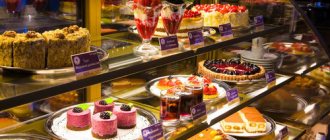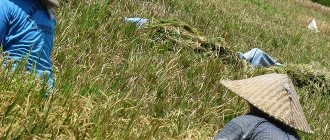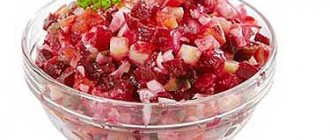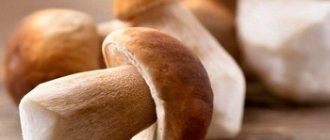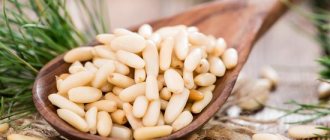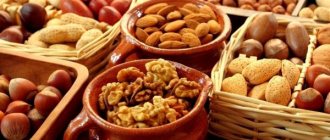Properties of cooking fats
How much does cooking fat cost (average price per 1 kg)?
Moscow and Moscow region.
50 rub.
Cooking fats are nothing more than margarine or butter suitable for human consumption. According to the scientific definition, fats are organic substances of natural origin, which are glycerol esters and fatty acids. Natural fats belong to the group of lipids that perform various functions in the human body. For example, it is fats of natural origin that serve as an energy source, i.e. serve as a kind of battery for the human body.
Fats provide energy necessary for the normal course of all vital processes in the human body. Fats, along with proteins and carbohydrates, occupy an important place in the human nutrition system. There are several types of natural fats that differ in structure and composition. For example, saturated, unsaturated, and also polyunsaturated fats or fatty compounds and acids are found in nature.
In addition to the classification presented above, fats are divided into food or culinary, vegetable or animal, and also technical, i.e. compounds that are prohibited and even dangerous to eat. In turn, there are liquid and solid cooking fats, as well as oils. In addition, there are combined fat, frying fat or margoguselin. As a rule, natural fats are used in cooking, as well as in the pharmaceutical and cosmetology industries.
Technical fats are used as fuels and lubricants. It is worth noting that the production of cooking fats began to develop on the territory of the Russian Federation back in Soviet times. Food industry specialists have set themselves the task of producing a cheap type of cooking fat. Since then, they began to produce cooking fats, which, by the way, were distinguished by their low quality, to put it mildly. This product was not to the taste of consumers and was not popular. For this reason, the mandatory presence of cheap cooking fats in all culinary products was considered a characteristic feature of Soviet public catering.
Application
Cooking fat is widely used for preparing various dishes. It can be added to dough to make delicious pies, cakes and breads. You can fry meat, cutlets, vegetables and fish in cooking oil. This fat can be used for deep frying. It is perfectly heat treated up to 220 degrees.
To remove foreign odors, cooking fat should be melted and foam removed before use.
Market Analytics
- COVID-19 is changing the rules of the game in the cosmetics market
- Beauty of the future: cosmetic innovations 2020
- New ingredients are the driving force of the cosmetics industry
Convenient search for beauty salons on our website
Beauty salons in Moscow Beauty salons in St. Petersburg Beauty salons in Ekaterinburg Beauty salons in Novosibirsk
Latest blog posts on our website
- Naturecream / Geranium (Pelargonium) oil for skin health and beauty
- Prostye-sovety / Save on a beauty salon: procedures that can be done at home
- Naturecream / Growth Factor - brings back youth?
- Oksana-Lezina / 3 effective abdominal exercises from a fitness instructor for beginners
- Prostye-sovety / Making perfect curls at home
- Prostye-sovety / Which hair removal method to choose
- Naturecream / Wrinkles Puppets
- Naturecream / PEPHA-TIGHT - instant skin lifting
- Naturecream / Blue light - a danger to the skin
- Naturecream / Cocoa Butter – A treat for the skin
Latest forum topics on our website
- Mrs._Smith / Badly sunburned! What to do?((
- Ice / Is it necessary to combine fitness classes with a diet?
- Antonova / What can be used for hair loss?
- Radio operatorKat / Who was on a protein diet?
- Suzanna / Mesotherapy on the face
Other articles in this section
| Corn oil Corn oil is one of the best vegetable oils. It is produced from the seeds and germs of corn, which is rightfully considered a valuable agricultural crop. |
| Shea butter (karite) Shea butter has been known to mankind for centuries. Its country of origin is Africa. It is on the African continent that the shea tree (also called karite) grows, whose lifespan is about 300 years. The fruits of the tree resemble an avocado in shape and have aromatic pulp. |
| Cream margarine Close in composition to butter, cream margarine is considered. It contains animal fats and vegetable oils. Moreover, it contains up to 25% butter. |
| Confectionery fat for chocolate products The main ingredient of chocolate is confectionery fat. As a rule, it is made from plant materials. Sometimes animal fats are added to its composition: beef, pork, whale. |
| Cod liver oil Atlantic cod is one of the valuable species of fish of the Cod family, which live mainly in the waters of the Atlantic Ocean. The value of cod lies in the fact that in the food industry and cooking not only meat is used, but also the liver of the fish, as well as its fat. |
| Nutmeg Oil European explorers traveled around the world in search of the spice nutmeg, and not without good reason. Nutmeg, or Nutmeg oil, is not just a popular cooking ingredient with a sweet, warm, spicy aroma. It also has a wide range of medicinal properties, which made it a part of ancient cultures. Nutmeg oil is not only an expensive spice widely used in haute cuisine, but also an important component of traditional Chinese Indian medicine. |
| Cocoa butter Cocoa butter is a fat obtained from the ground beans of the chocolate tree by pressing crushed and roasted cocoa beans. This oil serves as the basis for our most favorite dessert - chocolate. Cocoa butter has a yellowish or white color, a dense consistency and has a pleasant smell and taste. |
| Ghee Butter Ghee has been known since ancient times. Ghee is a butter fat that is made from butter by removing water, milk sugar and milk proteins. When preparing it, it is very important that the butter is of good quality. The butter is melted over low heat, as a result of which the moisture and lactose evaporate, leaving only pure fat. |
| Rendered beef fat Animal fats are an irreplaceable product in cooking. They are taken from bone tissue, internal organs, and fatty parts. The prepared dishes are not only tasty and aromatic, but also healthy for the human life cycle. |
| Rapeseed-soybean oil Rapeseed-soybean oil is obtained by mixing two separate types of oils: rapeseed and soybean. But before mixing them, each of the oils is purified, although at the same time preserving their taste and beneficial properties. Purification is necessary so that the resulting oil does not contain impurities, cloudy sediments, etc. Also, canola oil itself needs to remove erucic acid (a toxic substance deposited in body tissues) so that it can then be used with soybean oil for food purposes. |
Composition of cooking oil
The chemical composition of cooking oil, as well as taste and consumer characteristics, depend primarily on the type of product. For example, cooking fat may include a mixture of lard, vegetable oil and food additives. In addition to cooking fat, the food industry uses separate subtypes of the product, namely confectionery or baking fat.
The main material for the production of culinary fats is lard, which has the ability to melt at a temperature of 60C, as well as rendered fats of animal origin. Recently, nutritionists and doctors have been paying attention to the negative consequences of frequent consumption of foods prepared with cooking fats. It is believed that food additives used in the manufacturing process contribute to the development of cancerous tumors.
These are products that are practically anhydrous mixtures of various types of natural and processed fats.
The main raw materials for the production of culinary fats are edible vegetable and animal fats with a melting point of 31-34 ° C (60%), liquid vegetable oils (25%), rendered animal fats - pork, beef, lamb (15-35%), interesterified fats to improve consistency. Phosphatide concentrate, vitamins, antioxidants, flavors, dyes and some other substances are introduced as additives, as in the production of margarine.
Production. The technological scheme for producing fats of this group includes the following operations: preparation of recipe components, their dosing, mixing, cooling and crystallization, packaging and packing.
The most important operation is crystallization of the components. It is based on the property of the fat mixture to remain fluid for some time at a temperature below the pour point, i.e., during supercooling. The fat mixture is fed into a freezer, where it is cooled 1-2 °C below the pour point. The freezer is a horizontal cylindrical cooled apparatus with a coolant jacket, equipped with a shaft, a paddle mixer, and knives. The fat enters the cylinder through a hole, moves along it using a stirrer and is cooled at the same time. The knives prevent the fat from solidifying on the walls of the cylinder. From the freezer, the fat mixture is fed into a container, where it crystallizes and acquires a dense consistency.
Cooking fats can be packaged or bulk. For retail trade, cooking oil is produced in stick form, packaged similarly to stick margarine. .Unpacked solid cooking oil is packaged in the same way as margarine.
Cooking fats are stored in warehouses or refrigerators at temperatures from -20 to 15 ° C, constant air circulation and relative air humidity of no more than 80%. It is recommended to store this group of fats at temperatures from -20 to 0 °C. At the same time, culinary and confectionery fats for waffle and refreshing fillings are stored for no more than 6 months, and other confectionery fats for no more than 12 months. As the temperature rises, the shelf life decreases. The shelf life of fats with antioxidants increases by 1.5 times. It is not allowed to store fats in general warehouses together with products that have a strong odor.
Cooking fats include deep fat, vegetable lard, Ukrainian, Belarusian, Prima, Novinka, Vostochny, and Norwegian.
Cooking fats are used mainly for cooking at home and in food establishments. The formulation of these fats includes lard with a melting point of 31-34 ° C (35-75%) and liquid vegetable oil (10-35%). Ukrainian fat contains 15-30% rendered pork fat, Belorussian – beef fat, and Vostochny – lamb fat. In Prima they use lard with a melting point of 31-35 ° C; in Novinka - interesterified fat with a melting point of 25-35 ° C. Frying fat is lard with a melting point of 31-34 °C.
How the product came about
Cooking fat was first produced back in Soviet times. Food industry specialists were faced with the task of creating a cheaper product. As a result of the work carried out, many combinations of various fats were created that could replace rendered fats of animal origin.
Initially, new products were not in great demand among USSR citizens. After all, their taste and aroma were not so attractive. Therefore, new compounds were gradually introduced into the food industry. The product was used in canteens and also in places of mass production. In conditions of crisis, the new cooking oil was nevertheless recognized by the citizens of the USSR and took its place of honor among its more expensive analogues.
Benefits of nuts
The benefits of nuts are difficult to overestimate. And it doesn’t even matter whether nuts are proteins or carbohydrates, the most important thing is that they are simply a storehouse of substances beneficial to human health. Medicine uses the properties of nuts for various purposes, for example as a bactericidal, immunomodulating, anti-inflammatory, and anthelmintic agent. In addition, nuts are very good for the brain, for diseases of the heart and blood vessels, they strengthen the immune system and increase the body's endurance. Due to the presence of iodine in their composition, nuts are necessary for people suffering from thyroid diseases.
The nut is very useful for anemia. It increases the level of hemoglobin in the blood. Tincture from walnut partitions perfectly strengthens the nervous system. Nuts also have a beneficial effect on male strength. They knew this back in ancient times, so they included this product in the daily menu. The protein contained in nuts normalizes the intestinal microflora.
All the beneficial properties of the nut are countless, but there are also contraindications to its use.
Composition and benefits
Depending on the recipe, all cooking fats differ in their chemical composition and have different effects on the body. However, they are all useful and important for normal human life.
Interesting fact! Cooking fats are absorbed by the body by 96%, so they are a good source of energy.
Fats are rich in:
- fat-soluble vitamins E, A, K, D;
- beta-carotene.
Various fats contained in cooking fat act as the main building material of cells, are responsible for the tenderness and elasticity of the skin, the condition of the skin and hair, improve blood clotting and neutralize the negative effects of toxins.
When consumed in moderation, cooking oil helps maintain the beauty and health of the female body.
Did you know? The average adult needs to consume 20 grams of fat per day, which helps improve the absorption of important fat-soluble vitamins and beta-carotene.
Walnut. Proteins fats carbohydrates
Walnut is one of the long-known delicacies. It is used in many cuisines around the world, adding it to all kinds of dishes. The birthplace of the walnut is Central and Asia Minor.
The composition of walnuts is very rich. It contains a huge amount of vitamins and microelements. Walnuts also contain many unsaturated fatty acids, fiber, alkaloids and steroids. In terms of vitamin C content, walnuts are the leaders, even ahead of citrus fruits and currants.
To maintain your health, it is very useful to eat walnuts. It contains carbohydrates, proteins and fats in approximately the following ratio per 100 g of product:
- proteins – 15.6 g;
- fats – 65.2 g;
- carbohydrates – 10.2 g.
The calorie content of walnuts, as well as other types of nuts, is quite high, since it contains a lot of fat. However, these fats are healthy and do not increase blood cholesterol levels.
